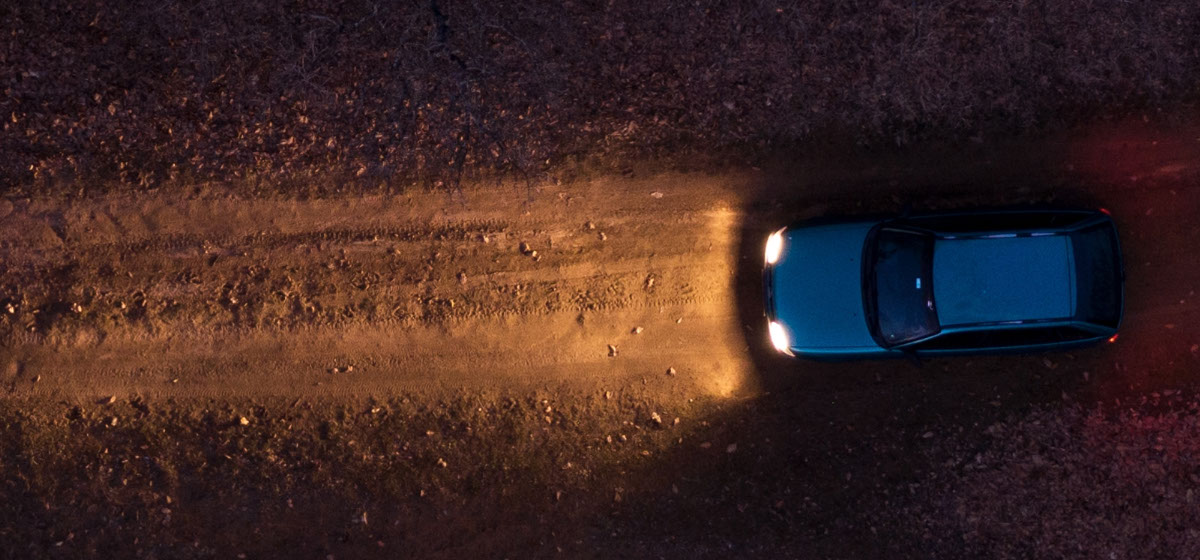What are dipped headlights
Whether you’re a new or fairly experienced driver, knowing which type of headlights to use can be confusing. We’ve got quite a few to choose from in cars these days, like main beam, dipped headlights, and fog lights. We’re going to run through what dipped headlights are on and when to use them.
Dipped headlights
A car’s dipped beam headlights are the middleman between your daytime running lights (DRL’s) and your full beam headlights. They’re the ones you’ll use the most when you need a little extra visibility on the roads, and as their name suggests, they’re angled slightly downwards.
The reason they’re angled downwards is to avoid dazzling other road users coming towards you, as well as the ones in front of you. So as your car’s brightest lights, which don’t blind oncoming traffic, you should opt for these if there’s other cars around you.
Another good thing about dipped headlights is that they’re connected to your car’s tail lights, so other road users can see you more easily when approaching. We’ll run through when you should use them, but it’s a good idea to make yourself more visible when driving in bad weather for example.
Main beam headlights
Your car’s main beams are the strongest lights, but they can dazzle other drivers if you don’t use them properly. You should only turn your full beam headlights on when driving on the road at night and there are no other cars around you. This is the key difference between your dipped headlights and the full beams.
Dipped headlights vs main beam
These two headlights are going to give you the most light on the road. But you’ll have to know when it’s safe to use main beams, or if it would be a better idea to switch to your dipped headlights.
The Highway Code says you should dim your high beams down to dipped headlights, if a car is approaching you from the other direction. You’ll also need to do this when passing other road users to avoid putting them at risk, like cyclists and pedestrians. You can then flick them back on once you’re level with, or have driven passed the other person.
When to use dipped headlights
You’ll have to know when you should be turning your dipped headlights on to be a safe driver, and the Highway Code does have some guidance on this. They say you should be using them on these occasions:
- In darker hours (in dusk or night)
- In poor weather conditions
Sometimes it’ll be pretty clear when you’ll need more lighting on your car, like in heavy rain where your visibility is seriously reduced. But there’ll also be times when you’ll have to make a judgement call, which often comes with experience.
Dull daylight can be a tricky one for instance, but we’d recommend always opting to switch your dipped beam headlights on if you’re unsure. They’ll make things much clearer than sidelights or DRL’s would, so it’s definitely the safer option.
Having said this, using your headlights when driving at night depends on the type of road you’re on. You won’t need to use them if you’re on a road with streetlights, as you should have plenty of visibility around you. It’s perfectly legal to drive with only sidelights on in built up areas or if it’s a lit street, which generally has a speed limit of 30mph or lower.
Car headlight bulbs
Making sure your car’s headlight bulbs are up to scratch should be part of your yearly car service checklist. Your garage will do this for you, as it’s important to make sure your journey is as smooth and as safe as poss.
There are some things you can do to keep your lights at the top of their game throughout the year though. You could get to know how to clean car headlights for example, so they stay in great condition ready for when you need them most.
Staying on top of general car maintenance in this way can also save you time and money, on top of keeping you safe behind the wheel. So spending a bit of time on it really won’t go to waste.
Learner driver insurance
There’s no better way to get to grips with using car headlights than practicing in a real-life car. We might be able to help get you on your way with our learner driver insurance. So next time you’re out for a spin, see if you can use what you’ve learned today. Good luck!
